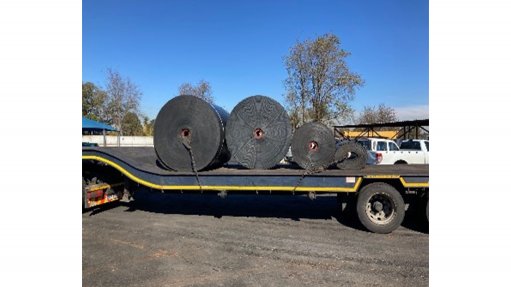
CONVEYOR BELTING Mining operations are moving towards working closely with suppliers
Conveyors are the veins of many operations, as they are used to transport materials efficiently and effectively, which makes sourcing conveyors and their components, as well as quality maintenance, key to ensuring reduced cost and extended equipment longevity, says industrial equipment supplier Worldwide Conveyors sales and marketing head Trevor Howard-Tripp.
In the mining industry, conveyors carry a range of materials, servicing major operations in the coal, platinum, gold, iron-ore and diamond sectors, besides other minerals.
Howard-Tripp explains that all the components in a conveyor are important for an efficient system. Therefore, having access to those components at a moment’s notice is critical to the success of the operation, especially in terms of reducing downtime and ensuring transportation of material.
Owing to conveyor belting being one of the most expensive components in a conveyor system, manufacturers need to ensure that other conveyor components work towards maintaining and protecting the longevity of the belt.
“Maintaining those components is imperative to the system and reduces expenses, essentially bringing down the cost of tonnage conveyed,” he says.
Although South African mining operations maintain a presence of qualified engineers and experienced employees on site, gaps in the amount of experienced personnel have emerged, as many employees have emigrated.
Using suppliers’ expertise can fill some of those gaps, resulting in an increased knowledge in specific areas.
Howard-Tripp explains that mining operations are slowly moving towards working more closely with suppliers, including sharing the responsibility with suppliers of holding stock of critical components required by mines.
However, owing to the variety of different components, with their varying purposes, as well as the need for suppliers to grow their specific markets, the benefits of collaboration between suppliers and mines are not always realised.
Additionally, some suppliers do not always provide advice that can create holistic savings for the mine, but rather focus on short-term successes. This is especially the case if the various components required are supplied by multiple specialist suppliers.
To mitigate such hurdles, mining operations can buy all conveyor components from one source or supplier. Companies can also work with the belt supplier to ensure all that components are compatible.
He also advises using conveyor experts who are able to prove how the components can result in cost savings, as well as ensure that specifications are fit for purpose and will work effectively towards a lower cost per ton conveyed.
Meet the Mark
Different conveyor systems are used for specialist applications and client requirements, but the management of these systems sometimes does not meet the required standards.
Howard-Tripp comments that some suppliers have become more involved in terms of resolving their clients’ challenges using a continuous savings and productivity-driven process.
“However, this is more an exception than a norm,” he adds.
Fit-for-purpose equipment is becoming more prominent because products or components that are overspecified, expensive and not well maintained or are prone to mechanical damage can shorten the life of such components.
Therefore, life expectancies of components should be calculated and closely observed and monitored. Different techniques, such as correct belt loading, belt cleaning, maintained pulley lagging and timeous belt repair among others, also need to be applied to maximise product use, thereby decreasing spend.
Clients also need to be aware of industry standards that drive the specifications and manufacturing of conveyor belting that set a platform for quality and reliability, as these specifications are the result of many years of collaborative thinking among local manufacturers and suppliers in the industry.
Such specifications have been set as South Africa National Standards (SANS) in the conveyor belting industry through statutory body the South African Bureau of Standards (SABS).
While the SABS is meant to monitor the suppliers and check, audit and test the various products to uphold the standard, monitoring has been sporadic and ineffective of late, owing to several institutional challenges.
The South African National Accreditation System’s accredited certification body Mark Scheme – operated by certification body Mining and Surface Certification (MASC) – realised the opportunity to address these shortfalls in testing.
Rather than operating an in-house laboratory, as the maintenance thereof carries significant expense, MASC uses suppliers’ laboratories and ensure that equipment calibration is regularly checked and tested.
MASC visits the various laboratories and audits the testing of the belting to original SANS specifications. Suppliers are given the MASC Mark if their products comply with the standards set for the industry.
The MASC Mark assures clients that industry standards are maintained and upheld, and that products ordered against that standard are delivered to that standard.
However, the standards do not cover the entire conveyor along with its components; they cover isolated overviews of each product sector such as plied, steel cord and polyvinyl chloride belting.
Howard-Tripp concludes that further expertise is required to expand on the standard to allow for deviation from the standard if the adjustments or specifications are altered to meet any unique requirements of customers.